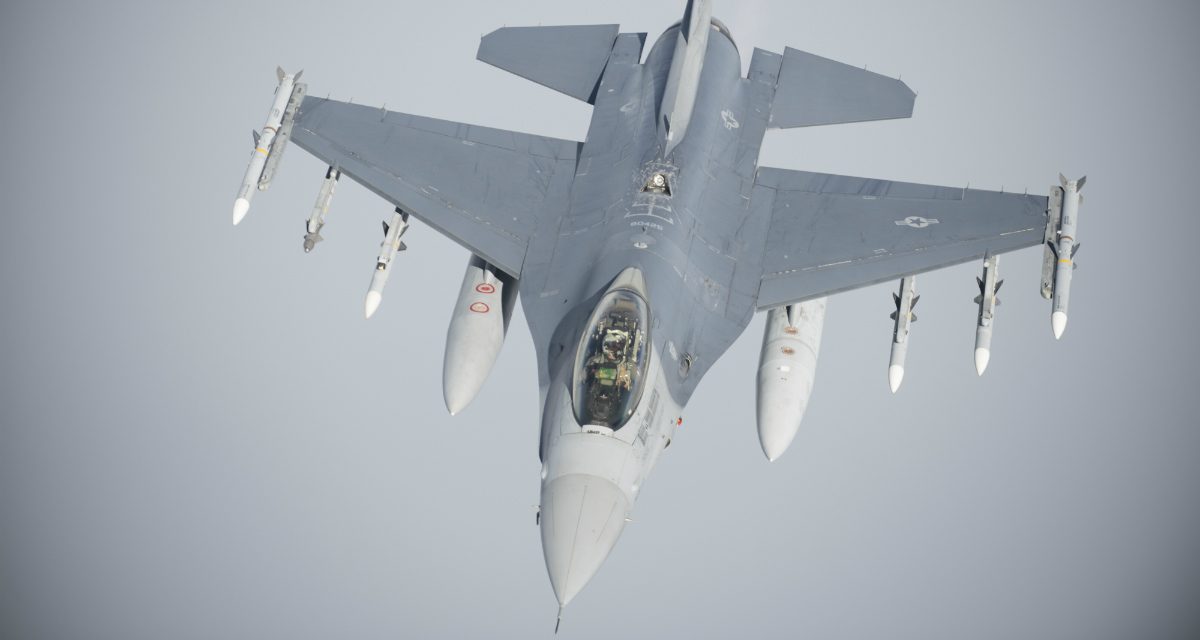This spring, for the second time, President Donald Trump ordered a precision air strike against another nation’s sovereign territory on the ground that it had used unlawful chemical weapons against its own civilian population, warranting a “strong deterrent” message to uphold international laws and norms. He did so without the explicit authorization of Congress, acting only on his executive powers under Article II of the Constitution. Moreover, his action was based on ill-defined and much debated principles of jus cogens norms and the evolving international legal standard that purports to authorize states to intervene in each other’s sovereign territory where such norms are threatened. In short, Trump’s order operated in a legal grey area, both domestically and internationally, creating a novel challenge for military and civilian officers of the executive branch who are both required to execute the president’s lawful orders and sworn to uphold the Constitution and the laws of war.
When President Trump decided to strike Syrian territory this time, the United States, France, and Great Britain each contributed military force. This time, the use of force was met with Russian counter-rhetoric, calling it an “act of aggression” that is “destructive of the entire system of international relations,” because it lacked a United Nations Security Council mandate, was not self-defense under the meaning of the UN Charter, and had no support from any other corner of international law of armed conflict. Moreover, whether President Trump had sufficient legal authority under US law to order these strikes is strongly questioned by some while supported by others.
Read the full article at the Harvard Law School National Security Journal.
Image credit: Tech. Sgt. Emerson Nuñez, US Air Force



I'm having trouble with this one. Whether or not to go to war — or to conduct military action against another country or group — is a policy decision, which in the U.S. is explicitly the role of the civilian political leadership. The issue of how far the President can go on his own before consulting or gaining authorization from Congress to employ military force is a Constitutional issue for the Congress, the President, and the courts, not a LOAC debate — the military should only be interested in the outcome and implementation. Any officer who can't bring himself to carry out such an order does need to resign.
HOW those orders are carried out takes us back onto known territory. If the order is to destroy an entire city in retaliation for a limited CW attack, an officer ought to question the proportionality of such an order. Or a request for weapons that may cause undue suffering. Those are clearly military issues to question and resolve. The rest of this is simply counting angels on the head of a pin.
Warlock, thank you for your comments. I tend to agree that resignation is a viable course of action when that military leader cannot bring themselves to execute the civilian leader's policy. But, to be clear, my article was not advocating for a prominent role for the senior strategic military leader in deciding "whether" to go to war or use military force in a limited way. (which is how I interpret your comment) Instead, I wanted to explore how those military leaders ought to engage with their civilian superiors in situations when the law governing the use of force is not unambiguously justifying or excusing that use of force. It is a hybrid, cross-disciplinary, issue spanning military ethics, political “science,” and the law.
At the strategic level of the Joint Chiefs and the Combatant Commanders, there is both an expectation and realistic need to be more than merely the "executors" of a Chief Executive's decision. Most modern scholars of Civil-Military Relations – regardless of whether they agree with the conventional "objective control" model from Huntington – would agree that these military leaders are responsible for providing a combination of services that go beyond simply caring about military "outcomes and implementation." This has been echoed and described by former presidents, former Secretaries of Defense, former field commanders, and former members of the Joint Chiefs. It is, in part, why the Goldwater-Nichols Act demands joint experience of the military's flag officers, and why the institutions educate these leaders at War Colleges on the D, I, and E, of D-I-M-E. I simplify this suite of talents as the provision of an "Advice, Action, Ability" trinity of expert skills. Civilian leaders employ military leaders in these 3 related roles because the military is the home of the expertise needed to employ its own force. It cannot do so on its own whim, that's true, but the civilian political leadership cannot execute and achieve its desired effect without it. Advice is offered, and it may be ignored. (Cohen calls this the political leader's "right to be wrong") Once the policy decision has been made to use force (in some form), the military leader must act on behalf of that civilian’s policy; but the military has the tools, some of which the civilian is not technically proficient enough to wield on its own. In so acting, after giving their advice, the military is expected to execute with skill – professional competence and ability.
But to provide competent advice and competent action in any given fact scenario where lethal violence may be unleashed in the name of the United States against a foreign actor, the military “agent” must be intellectually engaged and aware of when and how that use of force can be lawfully used – and not just at the tactical and operational level with No Strike Lists and Rules of Engagement (this is the realm of jus in bello principles of LOAC, like proportionality, distinction, military necessity, and prevention of unnecessary suffering). These issues are usually preceded by jus ad bellum concerns, but in a situation like a limited missile strike on a specific target to achieve a strategic political, military, and diplomatic effect, the jus ad bellum and jus in bello concerns tend to blur together. Like all legal problems, though, the resolutions turn on the facts of the case. Therefore, leaders must know the facts – which include the political and policy expectations (at least initially) that will drive military planning.
So, in order to (1) uphold their duty to support and defend the Constitution, (2) obey domestic law and the Law of Armed Conflict, and (3) adhere to their codes of professional ethics, these military leaders necessarily find themselves in positions where they are engaged in what Cohen calls the "unequal dialogue" with the civilian political community responsible for national security. The article is premised on the belief that it is worth considering what kinds of questions those senior military leaders would be asking – just as a doctor asks questions of her patient and a lawyer asks questions of his client – in order to satisfactorily meet their professional duties in accordance with the law. Doctors cannot accurately diagnose or competently prescribe treatments without facts offered by their principals – their patients. Lawyers cannot make reasonable, accurate, persuasive arguments unless they know what their principals – the clients – did, and what they hope to achieve in court. Likewise, the senior military leaders that are the subject of this article cannot lawfully – let alone effectively – perform their “Advice, Action, Ability” suite of duties without engaging their principals – the civilian political leadership – with questions like these.
Thanks again for taking time to read the article and commenting!
Small amendment to my reply above – I should have attributed the "right to be wrong" axiom to Peter Feaver of Duke, not Eliot Cohen. See Feaver, "The right to be wrong, but not the right to lie," Foreignpolicy.com, http://www.rooseveltroom.net/feaver-the-right-to-be-wrong-but-not-the-right-to-lie/ (29 June 2011).